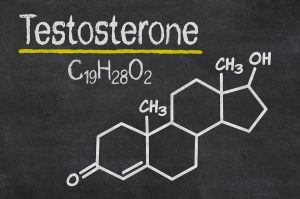Dr. Andrew Heyman gave a detailed talk recently about how stress affects our hormone system. He presented his talk at the 24th Annual World Congress on Anti-Aging Medicine (Dec. 9-11, 2016) in Las Vegas that I attended. It was entitled “Understanding the Stress, Thyroid, Hormone Connections & Prioritizing Systems”.
Dr. Heyman stressed in particular that there is a triad of hormonal connections that is important to remember: the thyroid hormones, the stress hormones (adrenal glands) and the pancreas (insulin production). It seems like we need a balance of these hormones for optimal energy production and circulation. Under stress our sugar metabolism can markedly derail, we develop obesity and fatigue. But when balanced we experience vitality and wellbeing.
Metabolic activation pathways
Dr. Heyman projected a slide that showed the metabolic activation pathways. Likewise, he stated that a number of different factors could influence the hormone system:
- Diet: trans fats, sugar, too many carbs, food allergies.
- Drugs: drug-induced nutrient depletion (over-the-counter drugs, prescription drugs).
- Physical exercise: frequency and type matters.
- Environmental exposure: chemicals, pesticides, herbicides, heavy metals, plastics, molds, and pollens.
- Stress: physical stress, psychogenic stress.
- Genetics: methylene-tetra-hydro-folate reductase enzyme deficiency (MTHFR mutation), APOE genes, lack of vitamin D
- Disease: past or present conditions, active disease or syndromes.
Target areas within your system
The target areas in your system are the
- Pancreas, where blood sugar can rise because of insulin resistance. In particular, too much insulin production causes inflammation, hormone disbalances, kidney damage, and hardening of the arteries through plaque formation.
- Thyroid gland, which depends on TSH (thyroid stimulating hormone) for activation. Autoantibodies can also affect it negatively.
- Brain: decrease in serotonin resulting in anxiety, depression and food cravings; decreased melatonin causing sleep disturbances; increased ghrelin and decreased leptin secretion leading to overeating and obesity.
- Liver/kidneys: both of these organs are important for detoxification; the liver produces thyroid binding globulin, which when increased can lower the free thyroid hormones.
- Immune system (gut, lymph glands): the Peyer’s patches in the gut mucosa produce a large portion of the immune cells; lymph glands, the bone marrow and the spleen supply the rest. A leaky gut syndrome can affect the whole body, in addition causing inflammation and autoimmune reactions.
- Hypothalamus/pituitary/adrenal glands: this is the main axis of the stress reaction. A brain under stress activates the hypothalamus. It sends a cascade of activating hormones via the pituitary gland and likewise activates the adrenal glands. Finally this leads to cortisol overproduction, and release of epinephrine and norepinephrine from the center of the adrenal glands. High blood pressure, anxiety, heart palpitations, arrhythmias and more can finally develop from this.
Hypothalamus/pituitary/adrenal glands activation and clinical effects
The main hormone axis of the stress reaction goes first from the hypothalamus, secondly via the pituitary gland and thirdly to the outside surface of the adrenal glands, which produces cortisol. The term for this is the HPA axis. Stressed people, therefore, make too much cortisol, which weakens immune functions, reduces human growth hormone production, increases belly fat, increases blood pressure and reduces insulin action. In addition, stress also reduces estrogen production in women and testosterone production in men.
Accordingly, the final clinical presentation is osteopenia, then osteoporosis with spontaneous fractures of bones. In addition there is also cardiovascular disease leading to heart attacks and strokes, and cognitive decline with memory loss. There are complications with infections. Also the metabolic syndrome can lead to obesity and type 2-diabetes.
Stress and the hippocampus
In the center of our brain there is a memory-processing unit, the hippocampus that converts short-term memory into long-term memory. Repeated stress interferes with normal hippocampus function. Indeed, high cortisol levels interfere with the proper functioning of the hippocampus causing memory problems.
Hippocampus atrophy can come from chronically high cortisol levels due to chronic stress. In addition this can lead to Alzheimer’s disease.
Effects of chronic stress
Chronic stress leads to cardiovascular disease, to diabetes, chronic inflammation, Alzheimer’s disease, thyroid disorders, cancer, neurological disorders and autoimmune diseases. Researchers showed that inflammation releases tumor necrosis factor-alpha (TNF-alpha), which is a key player of chronic inflammation. This, however leads to the release of other inflammatory kinins like IL6 and others. The resulting chronic inflammation can cause Crohn’s disease, rheumatoid arthritis, insulin resistance, dementia, metabolic syndrome, obesity and atherosclerosis with associated markers (decreased HDL, increased LDL, CRP and triglycerides).
Hormone imbalance causes disease
- Excess cortisol production from stress leads to Th2 type inflammatory kinins; usually associated with this is a reduction of DHEA (a male hormone in the adrenal glands), which leads to reduced Th1 type kinins. Overall, the end result is chronic inflammation. When chronic stress has tired out the adrenal glands, a four-point salivary cortisol level test shows a flat curve. This indicates adrenal gland fatigue or, if worse, even adrenal gland insufficiency. Most noteworthy, patients with leukemia, breast cancer, uterine cancer, prostate cancer, pituitary gland cancer and lung cancer show such a pattern.
- The disregulation of the HPA axis is particularly evident in patients with metabolic syndrome. People who have this syndrome have a high morning serum cortisol level. As a matter of fact, high cortisol increases the risk to develop metabolic syndrome.
- Metabolic connections: high cortisol leads to a partial blockage of thyroid hormones, which in turn leads to hypothyroidism. Hypothyroidism will affect glucose tolerance, and if not treated leads to type 2 diabetes.
In a large study involving 46,578 members of Kaiser Permanente Northwest it was determined that for every 1 point above a fasting glucose level of 84 mg/dL there was an additional 6% risk to develop type 2 diabetes over the next 10 years.
Pathological hormone disturbances
Dr. Heyman mentioned the following hormone patterns that he discussed in detail, increased cortisol levels, increased insulin levels and decreased thyroid levels.
Elevated cortisol
Prolonged elevation of cortisol leads to atrophy of the hippocampus with brain atrophy and Alzheimer’s or dementia. The immune system gets altered, there is lower DHEA hormone leading to weaker muscles and weakened immunity. There is insulin resistance (decreased insulin sensitivity), decreased serotonin and increased depression. Carbohydrate cravings lead to weight gain (central obesity). Changes in the thyroid metabolism leads to hypothyroidism.
Increased insulin level
People who develop high insulin levels are usually sugar or carbohydrate addicts. As they gain weight they change their metabolism into the metabolic syndrome. The extra insulin that is floating around triggers the insulin receptors to become less sensitive (also called “resistant”). The people love to eat. They snack frequently on protein bars and candy bars. As they gain weight, consequently their energy goes down and as a result they often develop painful joints. This prevents them from being physically active. They notice episodes of foggy thinking. Women complain of frequent yeast infections.
The body tries to compensate by slightly decreasing thyroid hormones and slightly increasing cortisol levels.
Decreased thyroid levels
There is increased lactic acid production and decreased insulin sensitivity. Oxidative stress is increased. The patient is depressed and cognition and memory are reduced. Also, the gut has slower motility. The mitochondria, the energy packages in each cell are reduced and functioning less productively. Cardiac function is reduced.
The body tries to compensate for the primary thyroid weakness by slightly elevating insulin and cortisol.
Treatment of stressed hormone system
Before the doctor can treat a disbalanced hormone system, blood tests have to be done that show what kind of hormone constellation is present. Dr. Heyman suggested the following support with supplements.
Treatment of thyroid disorders
Thyroid supplementation may involve any of these: Selenomethionine, iodine, chromium, thyroid glandular, tyrosine, ferritin, Ashwagandha, coleus forskohlii, 7-keto DHEA, ferritin and iron. Other possible supplements that were mentioned by Dr. Heyman were Rhodiola, schisandra, ginseng, Rg3, eurycoma longifolia, neuromedulla glandular, DHEA, tryptophan/5 HTP, licorice, Cordyceps.
This, however, is not all. Missing thyroid hormones need replacement with a balanced T3/T4 medication like Armour thyroid.
Adrenal support
The following supplements are used to support adrenals: Adrenal glandular, vitamin C, adrenal cortex extract, Holy Basil, Pharma GABA, Magnolia/Phellodendron, L-theanine, sterols & sterolins.
Pancreatic support
These supplements support the insulin production in the pancreas:
Chromium, vitamin D, magnesium, alpha-lipoic acid, fish oil, micro PQQ, bitter melon, cinnamon, arginine, vanadium, benfotiamine (synthetic derivative of B1 vitamin) and Bergamot.
Dr. Heyman completed his talk by giving a few patient examples, explaining what blood tests showed, what the hormone disbalance was, and which treatment options were helpful.
Conclusion
Dr. Andrew Heyman gave a talk at the 24th Annual World Congress on Anti-Aging Medicine (Dec. 9-11, 2016) in Las Vegas that I attended. He talked about how stress in due time affects our hormone system. Symptoms from stress can stem from different causes including hormone disbalances. Given these points, conventional medicine would simply treat the symptoms. However, this will not be successful with stress-induced hormone disbalances, namely, because it does not treat the causes. Obviously only causal treatment of the hormone disbalance will restore the person’s wellbeing and the symptoms will disappear at the same time. In short, anti-aging medicine and integrative medicine are attempting to follow this approach.









